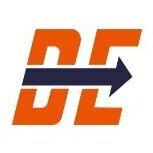-
Welcome to Auto Parts Forum
Whether you are a veteran automotive parts guru or just someone looking for some quick auto parts advice, register today and start a new topic in our forum. Registration is free and you can even sign up with social network platforms such as Facebook, X, and LinkedIn.
The Impact of Trade and Tariffs on the Aftermarket
-
Similar Topics
-
By Counterman
link hidden, please login to view has launched the new BKS1002 fuel pump kit. This new model is engineered specifically for high-pressure, in-tank applications and is the highest flowing fuel pump in the TI Automotive catalog, according to the company. The BKS1002 fuel pump kit will feature:
High-pressure, high-flow E5LM brushless screw pump 3’ long wire harness for tank mounting High-performance inlet filter Support of 1,000+ horsepower “The BKS1002 further expands our line of fuel pump kits with another high-pressure, high-performance technology, but adds additional flexibility for enthusiasts,” said Brian Altenberger, aftermarket business director, TI Automotive. “There has been a significant demand in the market for the option to purchase a standalone pump and the BKS1002 now provides that option.”
TI Automotive Aftermarket said its BKS1002 must be driven with a sensorless 6-step commutation method or other suitable methods such as Sinusoidal or Field Oriented Control (FOC). The BKS1002 pump, filter and wire harness are all components from the BKS1001, but without the controller. The BKS1001 will remain available, however customers who already utilize a controller may now opt to purchase a kit without one, offering additional build flexibility.
The post
link hidden, please login to view appeared first on link hidden, please login to view.
link hidden, please login to view -
By Counterman
link hidden, please login to view, through Northwood University, is holding Session I of its Leadership 2.0 course. The first five-day session continues through August 15. Northwood calls the class in tactical leadership for the aftermarket “a tremendous learning experience, with excellent presenters and supporters.” Leadership 2.0 includes a blend of industry research and market analysis, discussion and debate on the challenges confronting the light vehicle and heavy-duty aftermarket. Also discussed are competitive strategies, interpersonal communication skills, contract negotiations, conflict resolution, organizational culture, cyber-security best practices, insight into supply chain solutions, and other industry topics and trends.
Jennifer Cothran, the director of content at The Pronto Network, provided her account of the first day of the session:
“I am beyond excited to see what this week has in store for us. We kicked off today’s event with meeting our colleagues and opened with an exciting and inspiring conversation with two of Northwood’s best – Dr. Thomas Litzinger who encouraged us to be open this week, and from James O’Dell and what we could look forward on having an engaged class – on our own or with his help.
They saved the best for last as we heard from Lisa Foshee from the Auto Care Association. Her unique take on leadership and relating them to the game of basketball – Show up and BE present, DO bold things, and DO what you say you’re going to DO – were some of the takeaways. I can’t say I’ve talked about basketball that much before and based on her stories I’m glad I’m not a fan of her team’s rival! Hearing from other colleagues also sharing their perspectives from making all interactions personal, to a good/bad “Dad” joke, a coloring book to a just simple “hi, how are you?” can be bold moves to show presence and create those important relations and moments.
Not all of us can show up for their family to build a kitchen before we left for Leadership 2.0 as one of our attendees did, but taking time away from family and work to attend this “life changing” event is definitely a bold adventure for all of us. I’m looking forward to learning other unique experiences from the lineup of amazing speakers and from my fellow colleagues in attendance.
Thank you to AWDA for this amazing opportunity as a scholarship recipient and to The Pronto Network and the team left at home to take care of business. And, lastly, to my family who I’ve left at home – Thank you for taking on additional responsibilities for me to take advantage of this opportunity as learning never stops!
Session II of Leadership 2.0 will be held March 11-16, 2025.
The post
link hidden, please login to view appeared first on link hidden, please login to view.
link hidden, please login to view -
By Counterman
The automotive aftermarket often celebrates its long and historic legacy—manufacturers that engineer solutions, distribution channels that crisscross the country, parts stores and repair shops that keep America moving. Today, the aftermarket is paving the foundation of a new legacy—dreaming up innovation in new and existing powertrains, leveraging digitally driven solutions and forging stronger relationships. This year’s Road to AAPEX traverses the crossroads where history meets ingenuity to drive the industry down the road toward its future legacy.
Babcox Media’s Joe Keene, an ASE-certified technician, navigates the automotive aftermarket landscape, starting at the Crawford Museum in Cleveland, Ohio. A location rich in automotive history, the Crawford Museum displays a parallel path between early automotive designs and modern vehicles that shows off the continuous advancements that have shaped the industry.
Meanwhile, David Sickels, Babcox Media editor, will delve into the aftermarket and the significant contributions of independent companies within the supply chain. He’ll travel the country to chart the history of the aftermarket, the key players, and the processes involved in manufacturing automotive parts. He will interview key figures in the industry and examine the processes that bring aftermarket parts from conception to market, providing valuable insights into the operational aspects and historical development of the aftermarket sector.
Then there’s Babcox Media’s Scott Shriber, automotive aftermarket guru, who will focus on the logistics and distribution chains that deliver parts to local technicians and repair shops. He’ll explore the history of parts distribution, tracing its growth and evolution into the complex system it is today while providing a detailed look at how distribution networks have adapted to meet increasing demand and technological advancements, ensuring parts are delivered efficiently and reliably.
Of course, it all ends where the rubber meets the road—the hard-working automotive repairs shops that put the parts and solutions to work to get customer vehicles back on the road. Joe Keene will take us on a tour of the automotive aftermarket front line to talk with shop owners and technicians about how they’re innovating within their own businesses to keep America moving.
Watch the video for a deeper understanding of the industry’s dynamics and the factors that drive its continuous evolution. Be sure to stay tuned for more episodes of Road to AAPEX.
The post
link hidden, please login to view appeared first on link hidden, please login to view.
link hidden, please login to view -
By Alex
We are setting up this topic to share information on any impact the current
link hidden, please login to view has on the auto parts industry. Sourcing, distribution, parts availability, and business impact. General questions and sharing of knowledge are welcome. The WHO has designated this a global pandemic that is already affecting many industries, including most sectors in the automotive industry. Corporate and Independent automotive parts stores are being impacted by repair shop businesses slowing down. As you know, many parts come from China and other parts of the world, which are affected by the current pandemic.
Please share how this is impacting you and what you are seeing.
link hidden, please login to view 
-
By Daysyore
The catalytic converter is a critical component in modern vehicles that plays a crucial role in reducing harmful emissions. This device, typically located in the exhaust system, helps convert toxic pollutants from the engine's exhaust gases into less harmful substances. While catalytic converters have been instrumental in improving air quality and meeting emission standards, they have also become a hot topic of discussion due to their environmental impact, cost, and potential for theft. In this article, we will explore the significance of catalytic converters, their environmental benefits, challenges faced, and potential future developments.
Environmental Benefits:
Catalytic converters have made significant contributions to reducing air pollution and improving overall environmental quality. They primarily work by facilitating chemical reactions that convert harmful pollutants into less harmful compounds. Key environmental benefits include:
1. Emission Reduction: Catalytic converters effectively reduce emissions of harmful pollutants such as carbon monoxide (CO), nitrogen oxides (NOx), and unburned hydrocarbons (HC). These pollutants contribute to smog formation, respiratory issues, and environmental degradation.
2. Compliance with Regulations: Catalytic converters enable vehicles to meet stringent emission regulations imposed by governments worldwide. These regulations aim to mitigate the adverse effects of vehicle emissions on public health and the environment.
Challenges and Concerns:
Despite their environmental benefits, catalytic converters face several challenges and concerns:
1. Precious Metal Usage: Catalytic converters contain precious metals like platinum, palladium, and rhodium, which act as catalysts. The extraction and mining of these metals can have negative environmental impacts, including habitat destruction and water pollution.
2. Cost and Maintenance: Catalytic converters are expensive components, and their replacement or repair can be financially burdensome for vehicle owners. Additionally, improper maintenance or the use of low-quality fuels can lead to premature failure or reduced effectiveness of the catalytic converter.
3. Theft: Catalytic converters contain valuable metals, making them a target for theft. Criminals often remove catalytic converters from vehicles due to their high resale value, leading to inconvenience and financial loss for vehicle owners.
Future Developments:
To address the challenges associated with catalytic converters, ongoing research and development efforts are focused on potential advancements:
1. Alternative Catalyst Materials: Scientists are exploring alternative catalyst materials that can reduce or eliminate the need for precious metals in catalytic converters. This could help mitigate environmental concerns related to metal extraction and lower production costs.
2. Improved Efficiency: Researchers are working on enhancing the efficiency of catalytic converters to further reduce emissions and improve fuel economy. Advancements in catalyst design and optimization of chemical reactions can contribute to more effective pollution control.
3. Anti-Theft Measures: Automotive manufacturers and law enforcement agencies are collaborating to develop anti-theft measures, such as tamper-resistant designs and identification technologies, to deter catalytic converter theft.
Conclusion:
The catalytic converter remains a vital component in the automotive industry's efforts to reduce harmful emissions and improve air quality. While it has made significant environmental contributions, challenges such as precious metal usage, cost, and theft persist. Ongoing research and development endeavors aim to address these concerns through alternative catalyst materials, improved efficiency, and anti-theft measures. As technology advances, striking a balance between environmental impact, automotive performance, and affordability will be crucial in shaping the future of catalytic converters and sustainable transportation.
-




Recommended Posts
Join the conversation
You can post now and register later. If you have an account, sign in now to post with your account.
Note: Your post will require moderator approval before it will be visible.